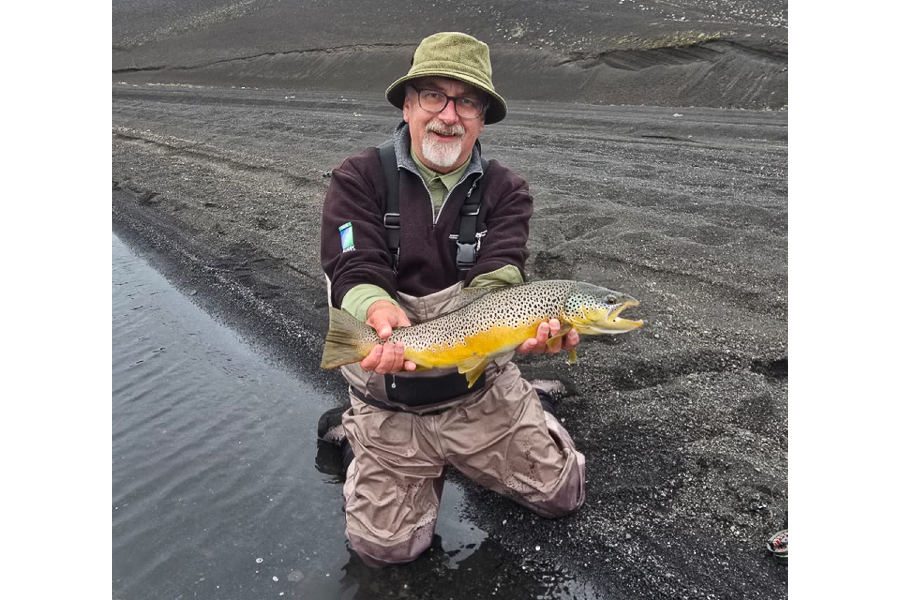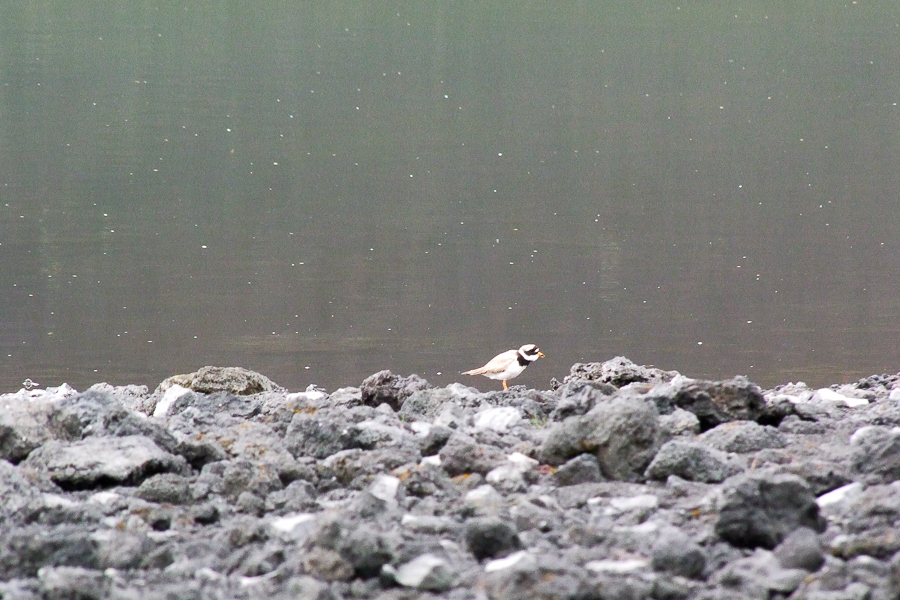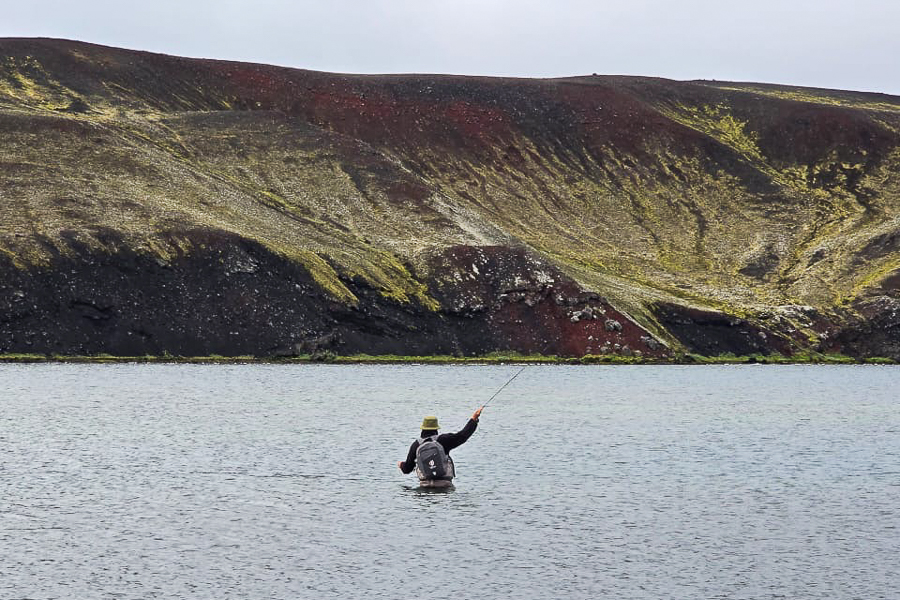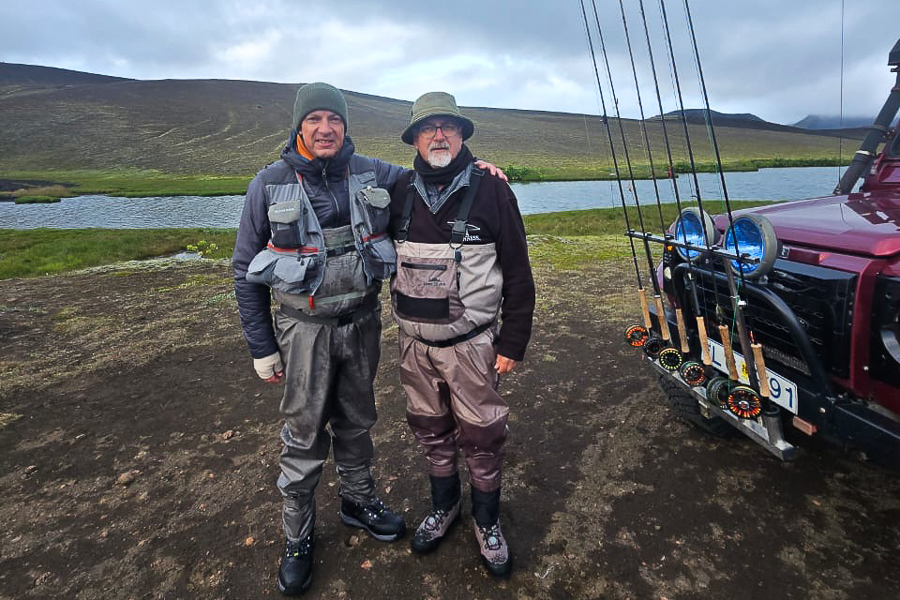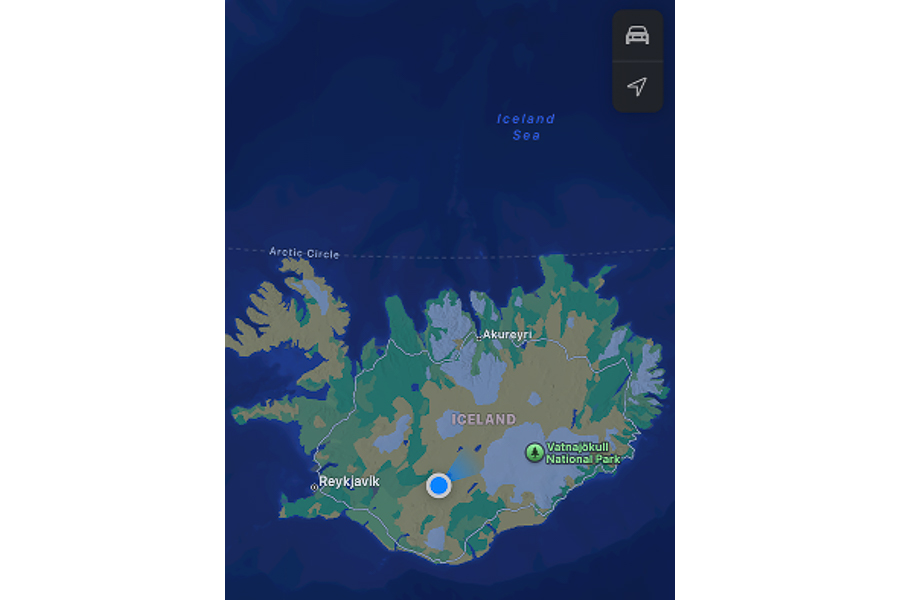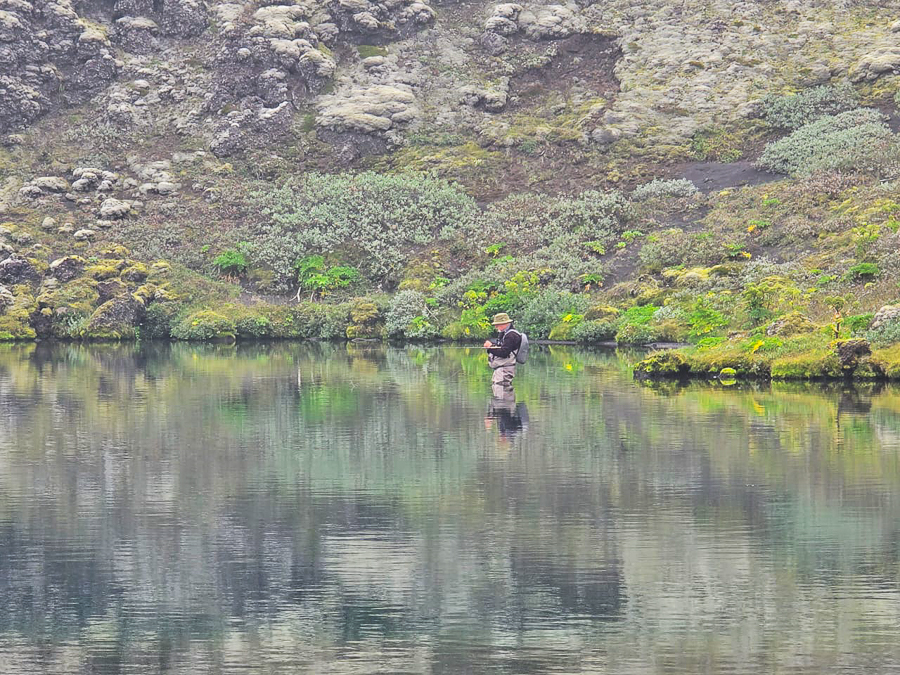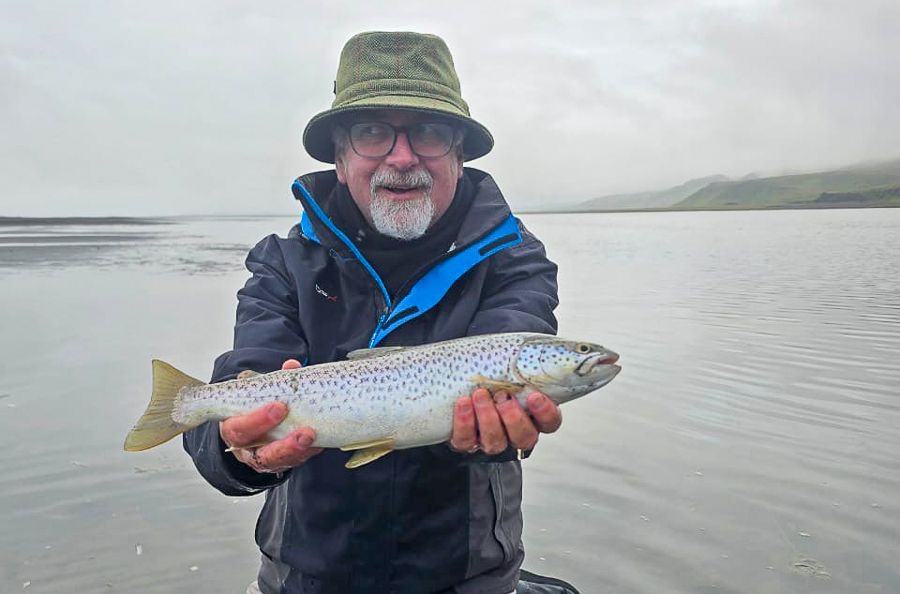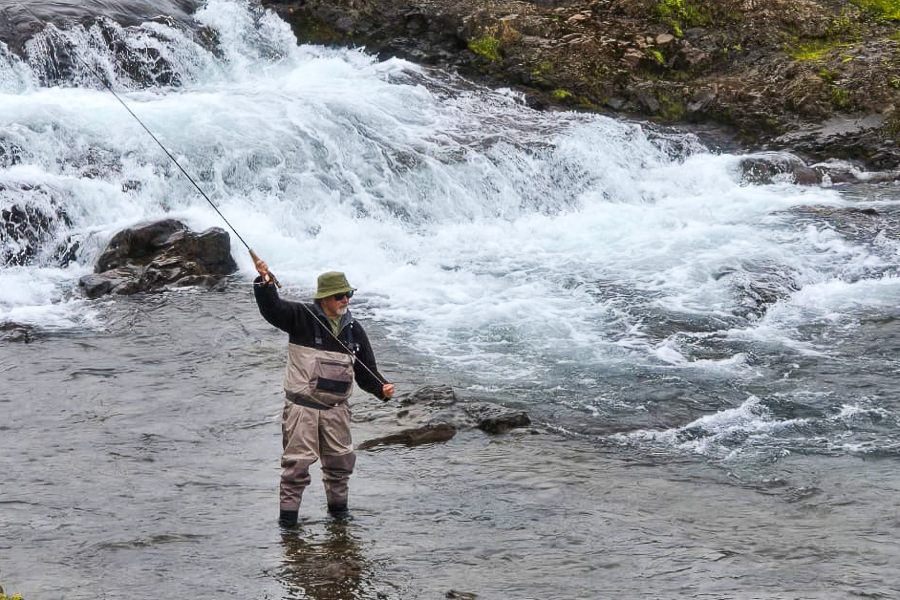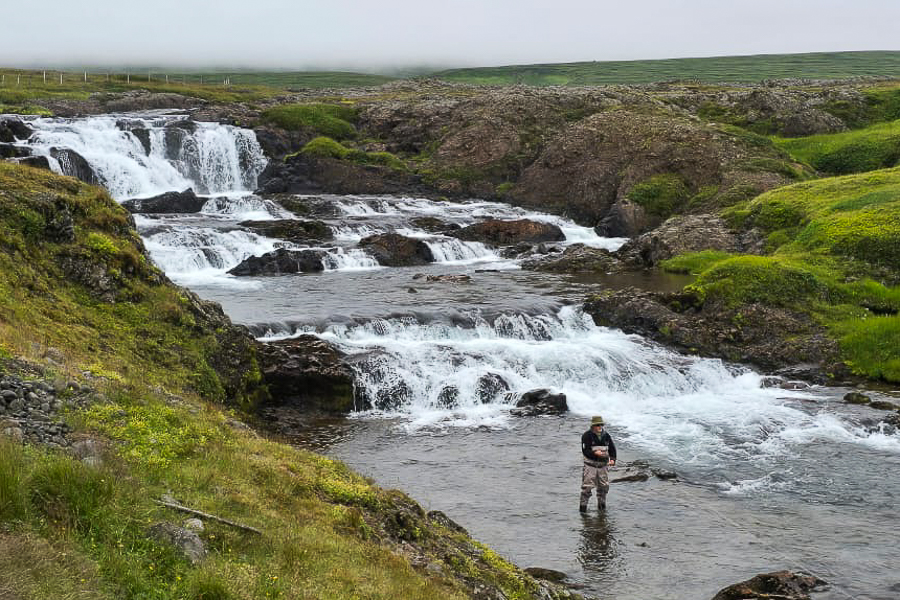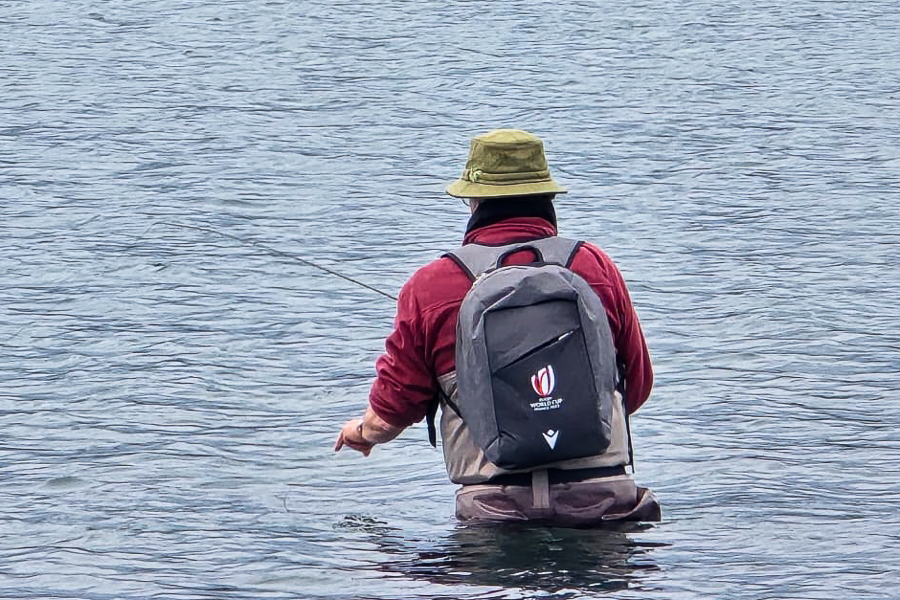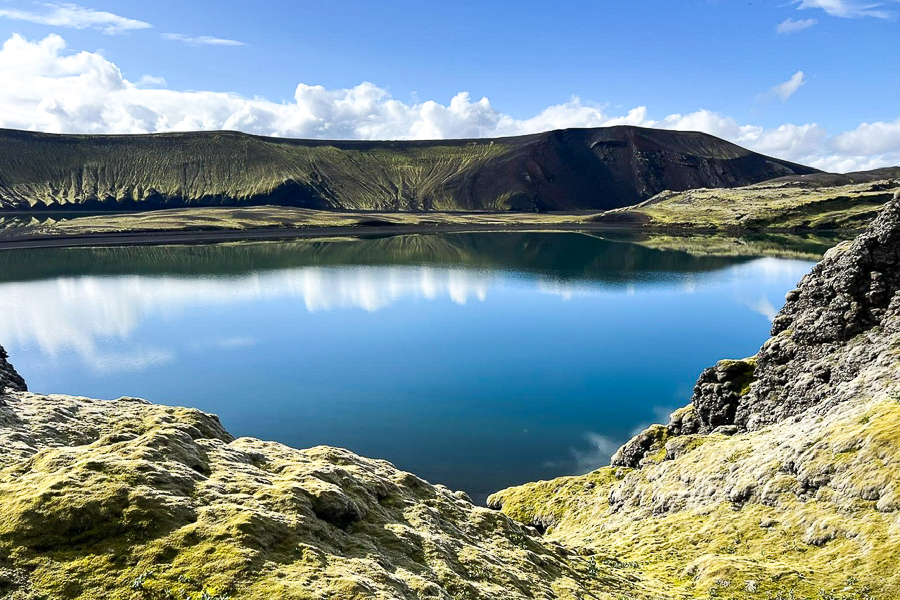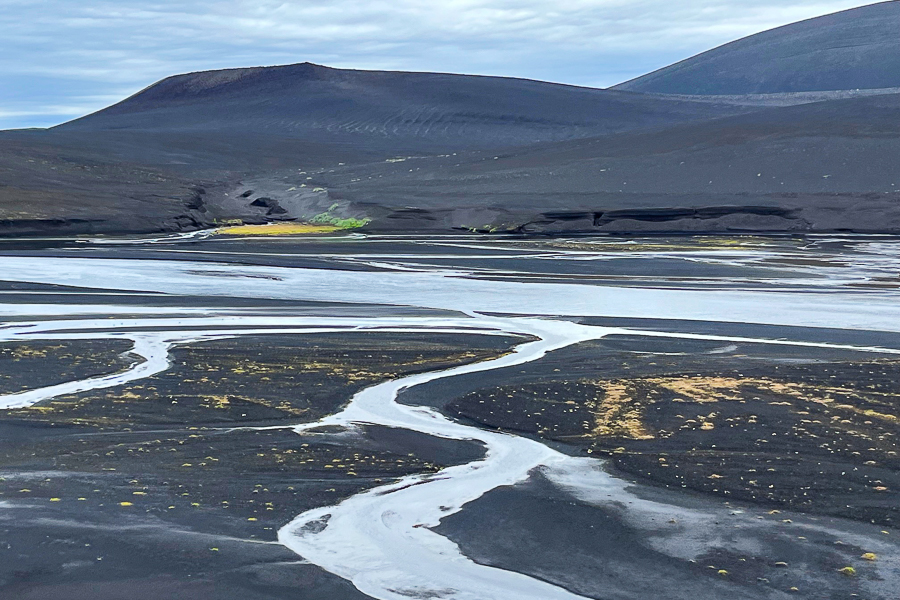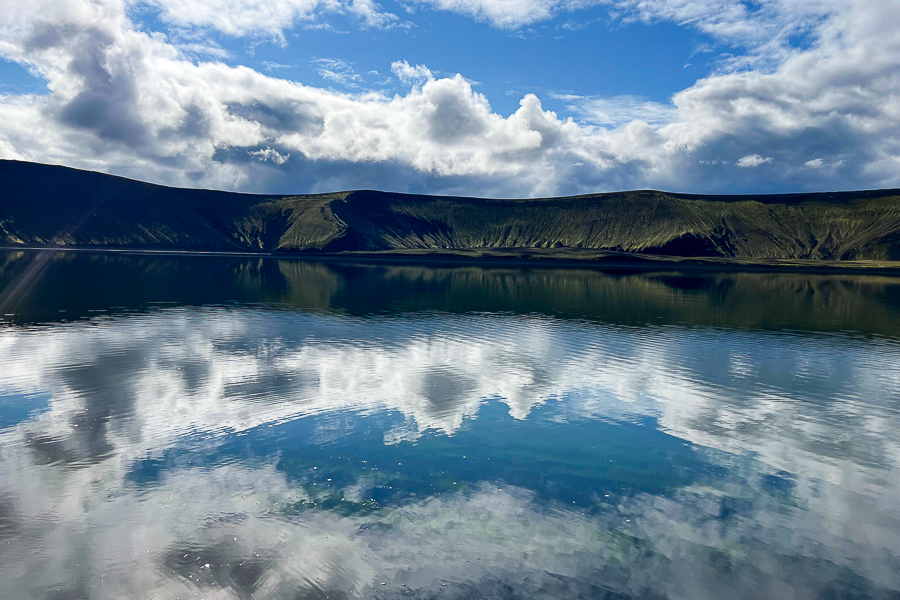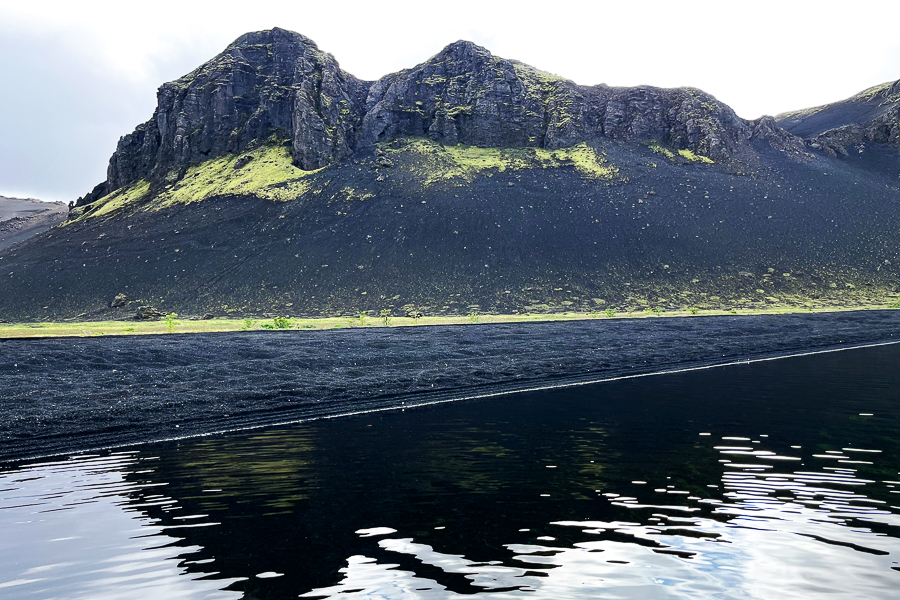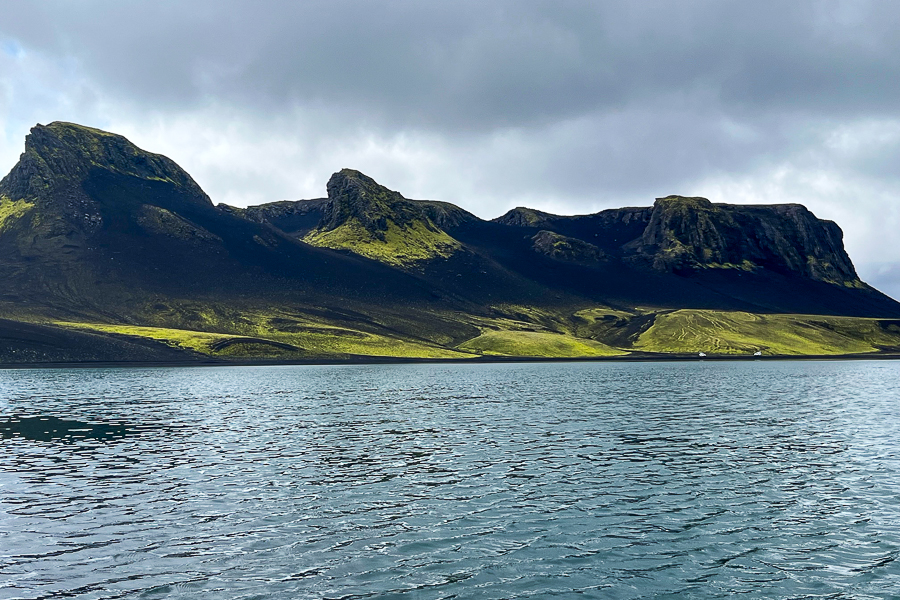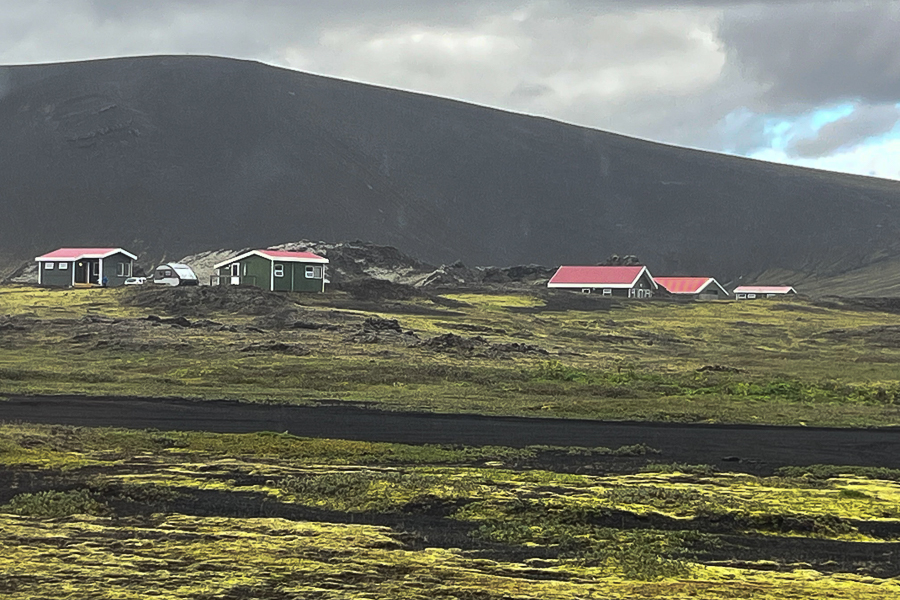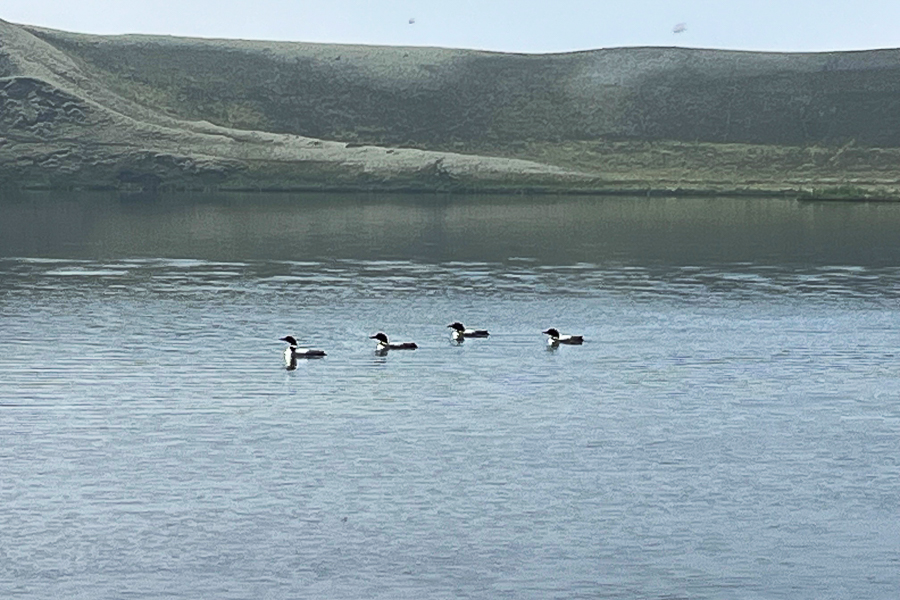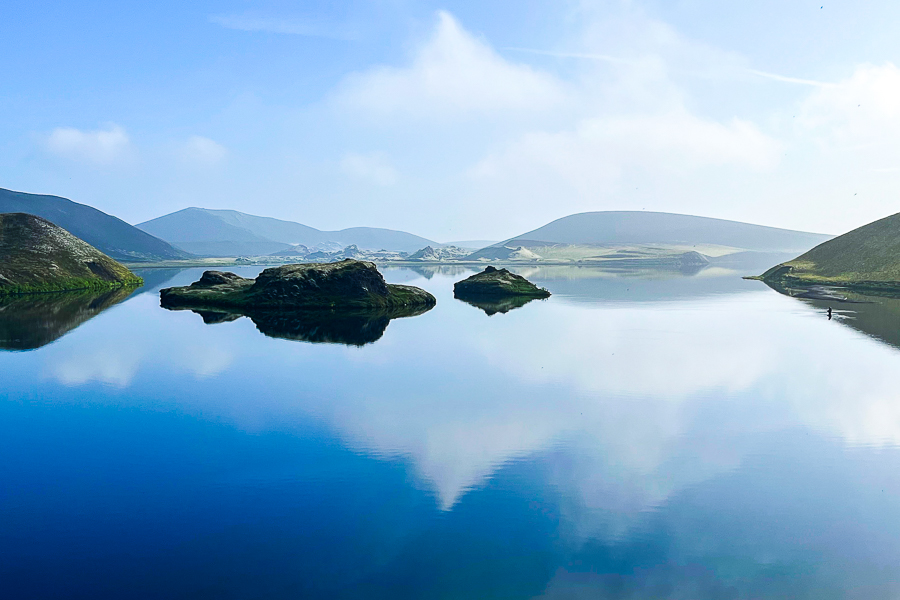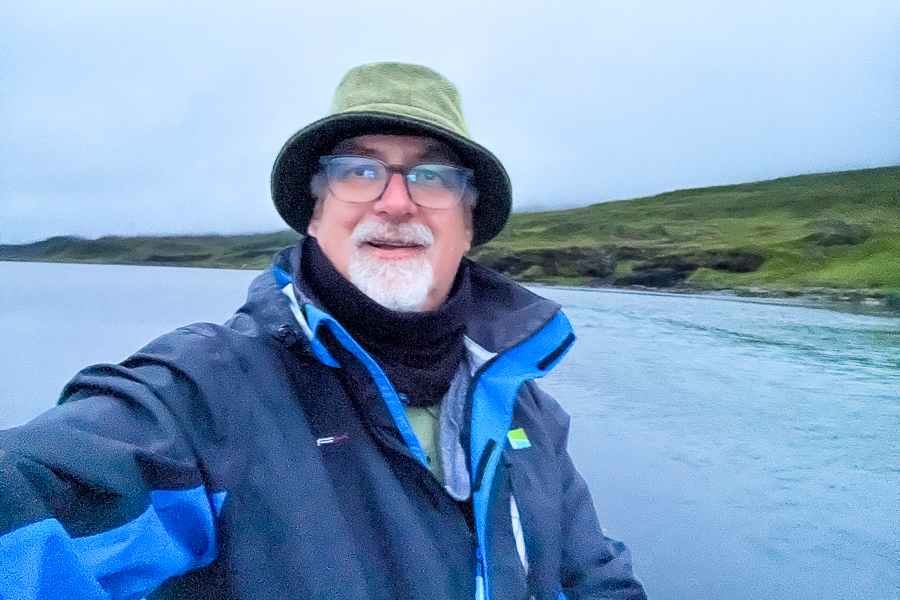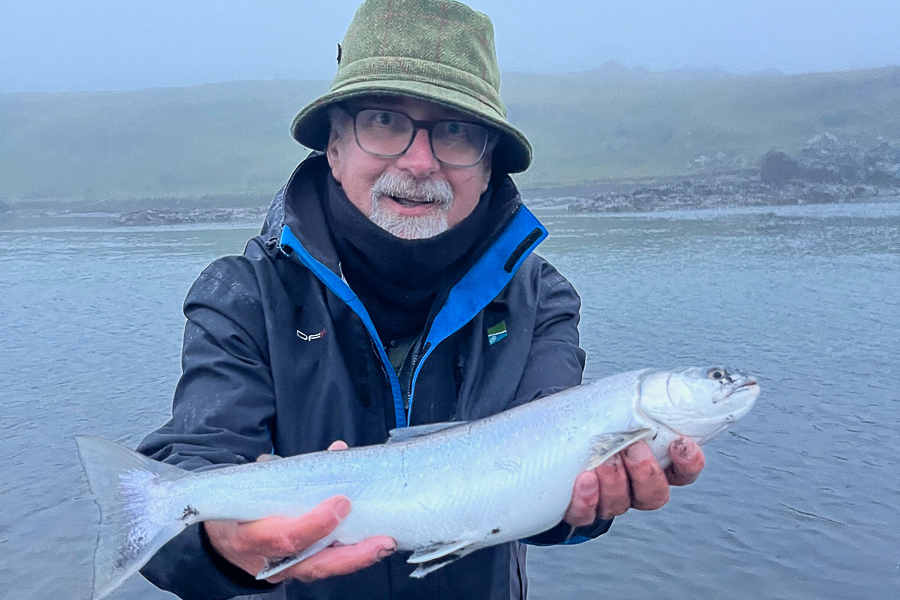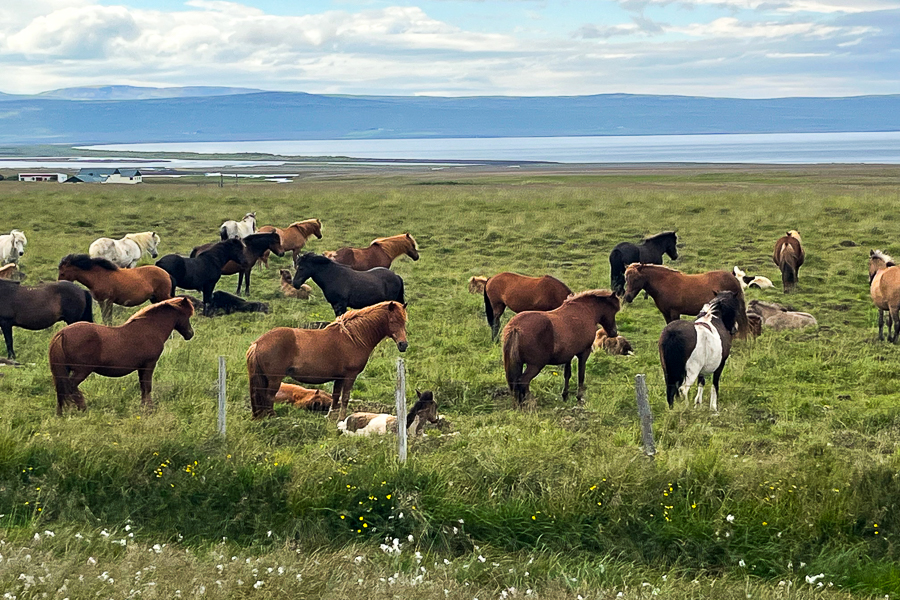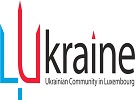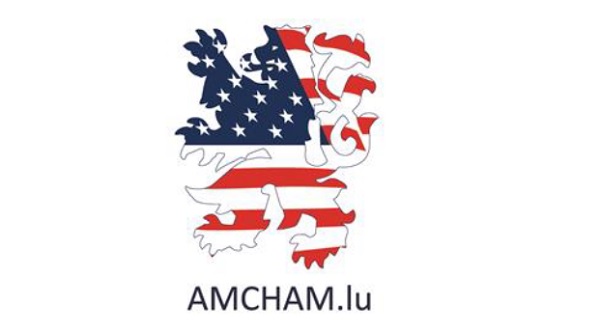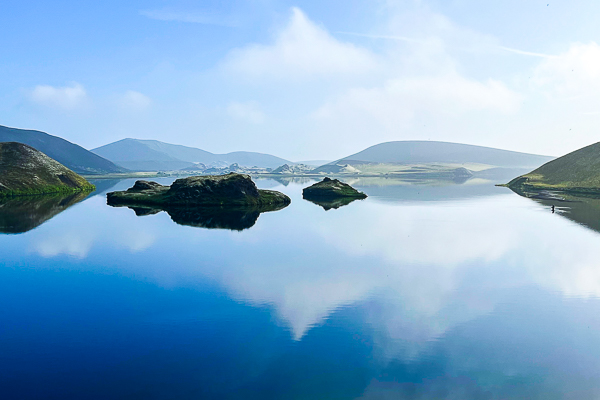 A lake at Veiðivötn, Iceland;
Credit: Geoff Thompson, Chronicle.lu
A lake at Veiðivötn, Iceland;
Credit: Geoff Thompson, Chronicle.lu
The main reason for the trip was to fly-fish, with four main species on the radar: large brown tout and landlocked arctic char in the highland lakes, and salmon, sea-trout and arctic char in a north-eastern river (fishing both the tidal estuary and freshwater upper stretches).
Fishing in the Highland Lakes
But first we had to get there… in a Landrover 4WD which was indispensable. The first hour or so from Reykjavik was on a paved road, but then we were offroad as we made our way to Veiðivötn, a lake and river area in the highlands.
As the best times to catch the large brown trout is in the late evenings and early mornings, we settled into a routine of two six-hour fishing sessions daily, interspersed with trip back to the cabin where we would cook, eat and nap. The cabins were equipped with toilets and sinks, fridges, 2-ring stoves and outdoor barbeque facilities, as well as bunk beds, a table and stools and, of course, hanging facilities for fishing clothing. They also had recycling facilities and a shower block.
Interestingly, the camp (at around 800m altitude - not high, relatively) had a fully-serviced filleting station, with anglers using it for mainly smaller fish than we were getting. While that facility may have been good for anglers, it begs the question about conservation as most countries nowadays practices catch-and-release to preserve fish stocks and make angling tourism more appealing. Interestingly, it was mainly the fly anglers who were operating catch and release.
Mind you, anglers are only allowed fish from the banks (wading is allowed, but no boats). Netting (from boats) is allowed on a couple of lakes, with statistics showing that nets catch 20,000 trout annually and anglers catch 10,000 on rod and line (fly fishing is allowed everywhere, with bait fishing / spinning allowed on select waters).
We would drive to different lakes, across terrain that looked like moonscapes or what you imagine the surface of Mars to be like, often fishing from gently-sloping black sand beaches, but wary that in some there were steep drop-offs, in others their was dangerous mud, and on others rocky patches that could be tricky to navigate when waist-high in water.
Driving too, was not without its challenges. While some rivers had wooden bridges, others were shallow enough to drive across gravel beds, with some deeper than others. Again, impossible to navigate without a 4WD vehicle.
While most waters where we were fishing were relatively mild in temperature, we needed to be mindful that others were fed by glaciers, so the temperature was only 2C. But the scenery was simply stunning; sometimes we had wind (which was welcome for the fishing), while at other times it was still as a millpond, allowing amazing reflections. We had some fine rain too, but it was mostly dry. And between 11-15C daytime temperatures (at night, there was little difference).
After a few days, mostly successful with a couple of five-pound brown trout topping the scales, plus a few small char (all fish were released), we then said goodbye to the cabin, the shower block and the camp as we packed up the Landrover and set off across the "moonscape".
Fishing in the North-East
We set off on a ten-hour trip north, the first seven hours of which were offroad and the remaining three were going clockwise on the Ring Road, the country's main highway; yet again we were thankful for the 4WD as some tracks were worse than others… But we survived the trip (it was far from an ordeal as we took various breaks en route and marvelled at yet more waterfalls, rock formations, valleys, gorges, volcanoes and glaciers, with a few wildflowers, moss and lichens.
When we started to near the coast and the Ring Road, one observation was quite stark: the valleys were greener and were being cultivated much more than in the south and south-west of the island. The farm buildings were distinct with white walls and red rooves of corrugated iron; there were more sheep, and some hers of cattle too. Some crops were being grown in the fields (yes, there were actual fields ere too), with some wheat, but mainly grass which was being cut for hay and for silage (which, until relatively recently, were stored in round stone silos, with modern storage methods now deployed more).
Our accommodation near Egilsstadir was a family guesthouse, with breakfast and evening meals included. Here our fishing day was again split into two but, as we were aiming to fish a couple of hours either side of low tide in the estuary, as well as be able to fish some of the upper stretches too, we found ourselves fishing through the first night until around 04:00, getting a few hours sleep (during high tide) so we could go back to the estuary again.
When fishing the upper stretches, there was one main difference to fishing Icelandic rivers compared to fishing other rivers: here there were no riverbank trees in which to get snagged: the country may have a yet young cultivated conifer forests, but most rivers are in rocks gorges or on expanses of black sand. Certainly quite different to anything I had experienced before.
Our perseverance paid off as we got plenty of arctic char to almost four pounds, a nice three pound sea trout, and we had one salmon (estimated at around fifteen pounds) on for around ten minutes but lost at the net.
The road back to Reykjavik was paved all the way, but the journey was uneventful and took took over ten hours, with a top speed limit of 90 km/h (80 km/h on gravel roads, but the average speed there was around 40 km/h). Part of the way also saw cycle paths adjacent to the main highway. We even saw a couple of people on unicycles...
Birdwatching
Iceland is a haven for birdwatchers, with many species flying north for the summer months, some breeding there too. The myriad of inland lakes and shallow estuaries provide an ideal habitat which is aided by a lack of mammals, rodents and other potential predators.
The Vikings introduced deer, and there are also some mink, rabbits and arctic foxes. This would explain that we saw hardly any roadkill on our entire road trip. Our guide informed us that polar bears sometimes make it as far as Iceland in winter, on icebergs; they are also very strong swimmers.
We were are to experience many species including the common ringed plover, the larger golden plover, snipe, greylag geese, whimbrel, redwing, common redshank, tern, common loon, red-throated loon, black-tailed godwit and many more.
Hafnarholmi is also arguably one of the best places to see puffins in the wild, with 7,700 nesting pairs, as well as other species, on three interconnected islands right next to the fishing town's harbour, with steps, walkways, observation decks and a study centre, as well as information boards adding to the visitors' experience.
Horses
Iceland has its own unique breed of horse, often referred to as the Icelandic horse (some call them ponies due to their size) which are known for their hardiness, distinct gaits and their close connection to Icelandic culture and history.
When driving across the highlands, we came across a couple of staging posts with dozens of horses and riders, with backup vehicles with services from inbound tour operators for their customers.
For the first article of my Iceland Destination Report, see https://chronicle.lu/opinion/23110-iceland-destination-report-part-i

